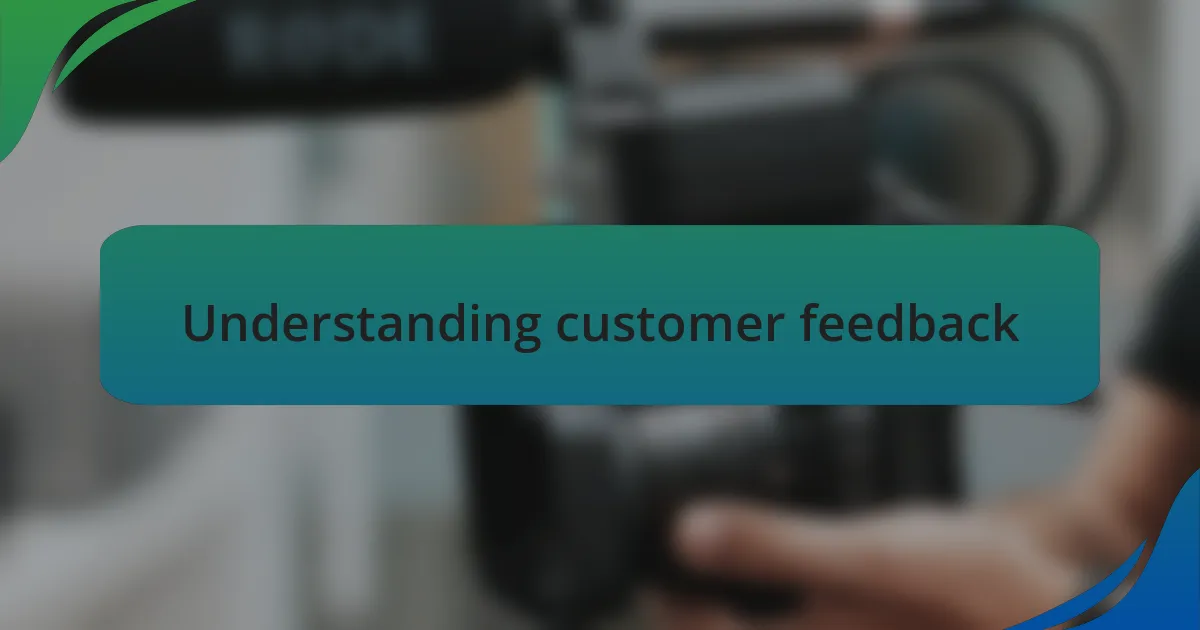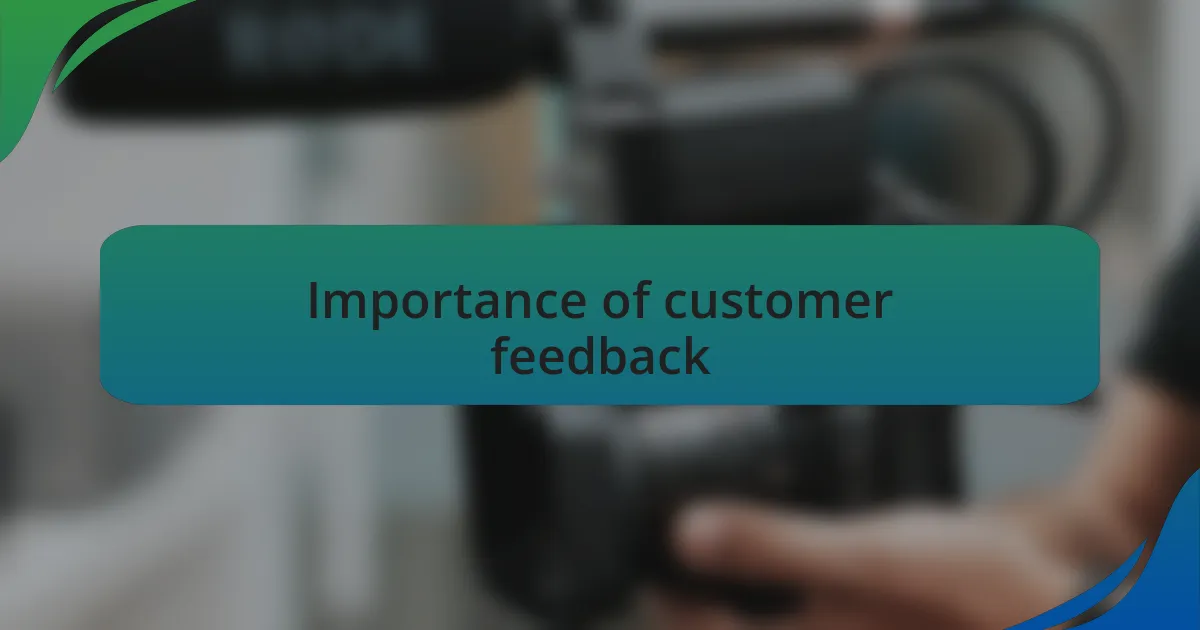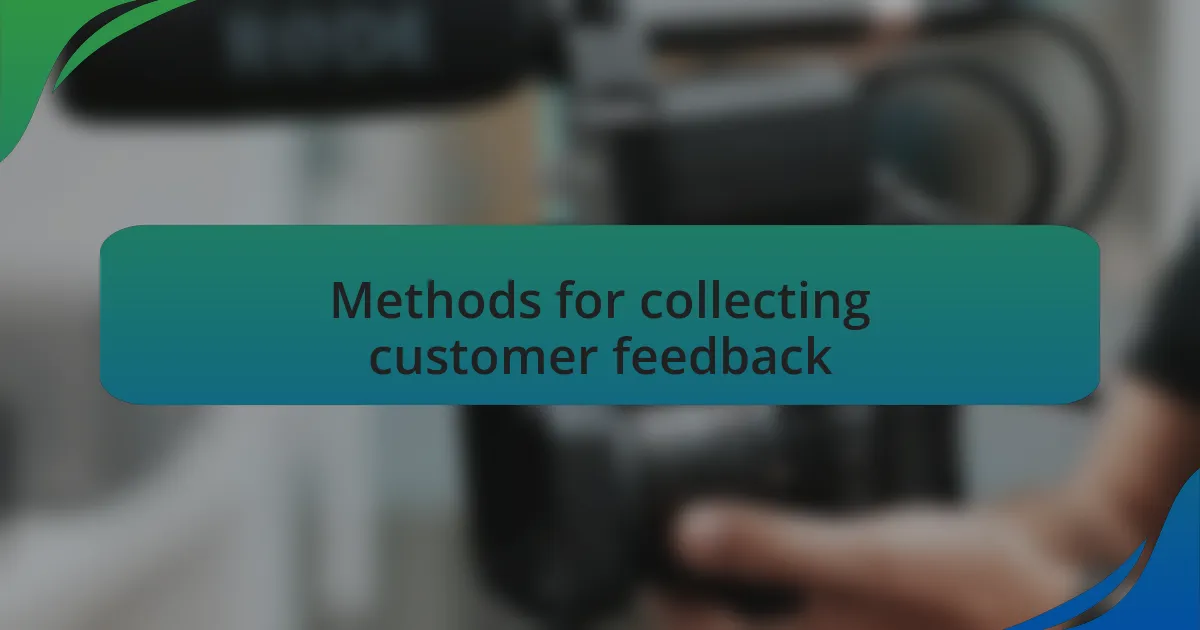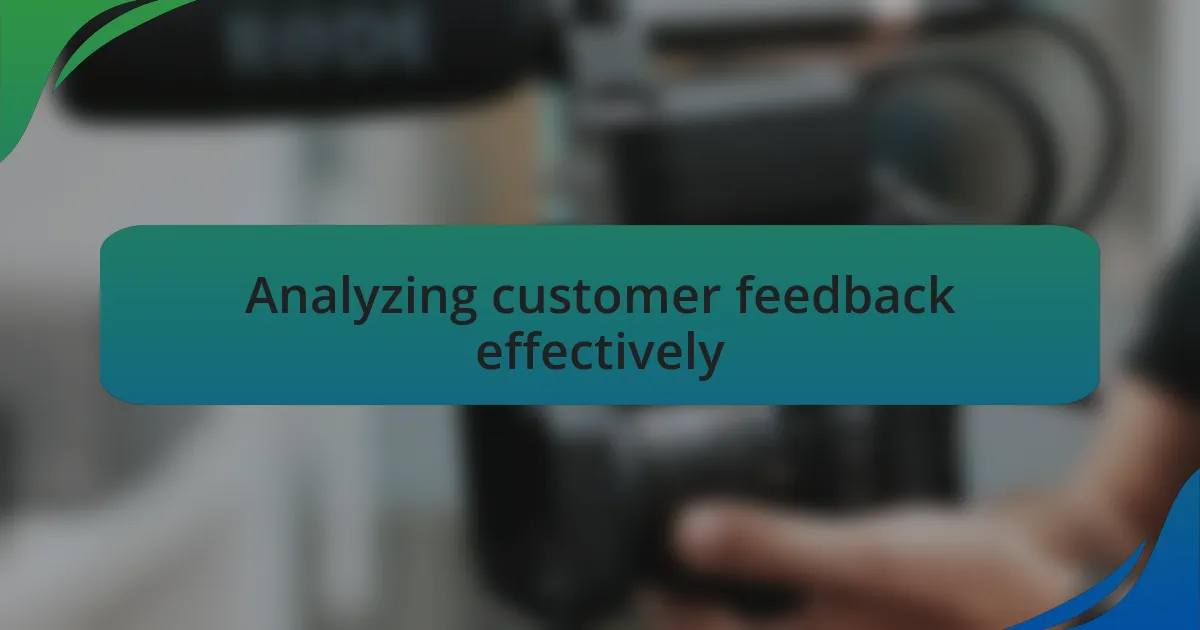Key takeaways:
- Customer feedback is a valuable tool for understanding emotional insights and adapting business strategies to meet customer needs.
- Effective collection methods, such as surveys, interviews, and social media, provide diverse and immediate insights into customer experiences.
- Analyzing feedback requires identifying patterns and themes, treating negative comments as opportunities for improvement rather than defensively.
- Engaging with customers on feedback can lead to significant operational changes and enhance overall customer satisfaction.

Understanding customer feedback
Understanding customer feedback is essential for any business, especially for SMEs. I remember a time when my team received a string of customer complaints about our website’s navigation. Initially, it felt disheartening, but it quickly transformed into a valuable opportunity for improvement.
Many entrepreneurs often overlook the emotional layer behind feedback. When customers take the time to voice their opinions, it’s not just about the product; it’s about their experience. Have you ever considered how a single review can encapsulate a customer’s feelings, frustrations, or even their hopes? This emotional insight can guide us in modifying our offerings to better align with customer expectations.
When I first started paying attention to customer feedback, I was amazed by how much clarity it provided. Instead of viewing it as criticism, I began to see it as a roadmap for growth. By actively engaging with feedback, I found that customers appreciated the effort and were more likely to remain loyal. This process turns a potential setback into a stepping stone for future success.

Importance of customer feedback
Gathering customer feedback is crucial because it serves as a window into how your audience perceives your business. I vividly remember receiving glowing praise on our social media platforms for a new product line, which not only boosted team morale but confirmed that we were on the right track. Isn’t it fascinating how a few positive comments can energize your entire staff and foster a culture of innovation?
On the other hand, I’ve also encountered feedback that required tough love—like when a long-time customer expressed disappointment with our customer service during a busy season. It stung a bit, but that moment taught me the importance of resilience and adaptability. Addressing such criticism head-on can elevate your service standards while reinforcing customer trust. How often do we allow ourselves to confront uncomfortable truths for the sake of improvement?
Ultimately, embracing customer feedback is like having a conversation with your audience. One day, while reading through reviews, I noticed a pattern in requests for more personalized services. This realization didn’t just inform our strategy; it reconnected me with our customers’ needs and desires. How else could you refine your offerings if not through the voices of those you serve?

Methods for collecting customer feedback
There are several effective methods for collecting customer feedback, each with its own unique benefits. Surveys are a classic approach, allowing me to gather quantitative data that reveals trends in customer satisfaction. I remember running a short online survey after a product launch; the insights we received helped us identify areas for enhancement that we hadn’t even considered.
Another method I’ve found invaluable is one-on-one interviews. Engaging directly with customers gives me a deeper understanding of their experiences and expectations. For instance, during a recent conversation, a customer shared specific frustrations with our delivery process. That candid dialogue opened my eyes to operational gaps I hadn’t noticed while wrapped up in day-to-day tasks. What better way to understand your customers than by listening to them directly?
Social media platforms are also an excellent avenue for real-time feedback. I often scroll through mentions of our brand; the comments there can be a goldmine of information. There was a moment when I discovered a benign tweet about a bug in our app—prompting a swift response from my team that not only resolved the issue but reinforced our commitment to customer care. How quickly can we respond to such real-time feedback and turn challenges into opportunities?

Analyzing customer feedback effectively
Analyzing customer feedback effectively requires more than just collecting data; it’s about finding the story behind the numbers. When I sift through survey results, I often notice patterns that reveal not only what customers are saying, but also why they feel that way. For example, a spike in negative feedback about a specific feature led me to dive deeper, resulting in a surprising insight: what I thought was a minor detail was actually a major pain point for a subset of our users.
I find it incredibly helpful to categorize feedback into themes—this process allows me to make sense of diverse opinions and uncover underlying issues. One time, after grouping feedback into categories such as usability, features, and customer support, I was struck by how many commenters mentioned delays in response times. This revelation urged me to rethink our support strategies, ultimately transforming a frustrating experience for our customers into an opportunity to enhance our service.
It’s also important to approach feedback with an open mind, ready to confront any discomfort that may arise from critical comments. There’s always a temptation to become defensive, but what if instead, we view this as a gift? One piece of advice I took to heart was to treat each piece of negative feedback as an invitation to improve. I recall receiving an email from a long-time customer who expressed disappointment with our new pricing structure. While my initial instinct was to justify the change, I chose to listen, and that conversation led to adjustments that made our offerings more appealing to customers while still meeting business goals.

Personal experiences with feedback utilization
Utilizing customer feedback in practical ways has often led to unexpected yet valuable experiences. I remember a time when I implemented a suggestion from a customer who recommended adding a live chat feature on our website. Initially, I was skeptical about the added cost and logistics, but after seeing the immediate positive response from users, I realized how crucial that feedback was. It turned out to be a game-changer, making our site more accessible and significantly improving user satisfaction.
One instance that particularly stands out involved a user’s comment regarding our onboarding process. Their frustration really resonated with me because I had once struggled with similar situations when onboarding with other services. Instead of brushing off their feedback as just one voice amidst many, I delved deeper, reaching out for a dialogue that led to revamping the entire process. This experience taught me that by engaging directly with customers, we can transform frustration into a refined and more enjoyable experience for everyone.
I’ve also learned the importance of celebrating positive feedback just as much as addressing negative insights. When a customer took the time to share their appreciation for our recent updates, I felt a sense of validation for the hard work my team had put in. Their words not only boosted morale but also reminded me that our efforts were indeed making a difference. It’s moments like these that make me wonder: how often do we pause to truly recognize the impact of our work on our customers?